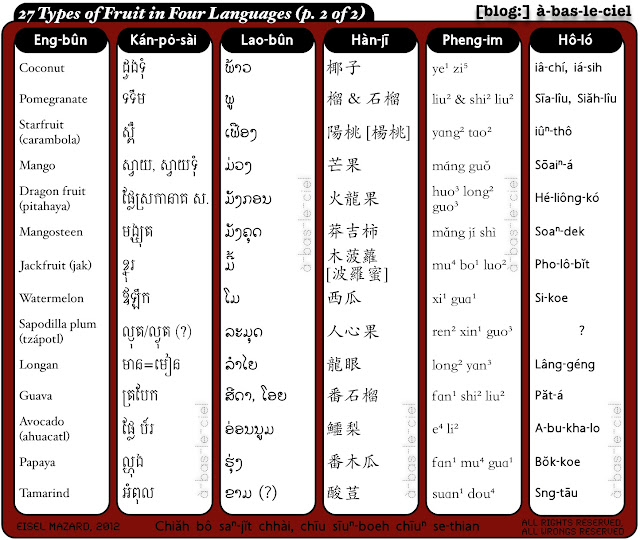In these two illustrations, you have 27 varieties of fruit set out in four languages. You'll notice that Taiwanese Hokkien (Hô-ló) very rarely corresponds to the Pinyin (Pheng-im) --and the correspondences are often "foreign fruit" with recently-coined names.
Indigenous fruits tend to have significant dialect variations; foreign imports sometimes have a variety of new coinages (e.g., "Shampoo fruit" is the second name given in Lao for syzygium "rose apple", probably just a reference to the color, as shampoo is presumed to be pink in the region).
My Hô-ló transcription differs from the standard (POJ) in just one respect: I'm using the breve (˘) where the standard would have the difficult-to-compute vertical line above the vowel: păt-á vs. paˈt-á.
A few of the names on the list were filled-in by suggestions that I received from members of the Learning-Ho-Lo@Googlegroups --and my thanks go to them.

